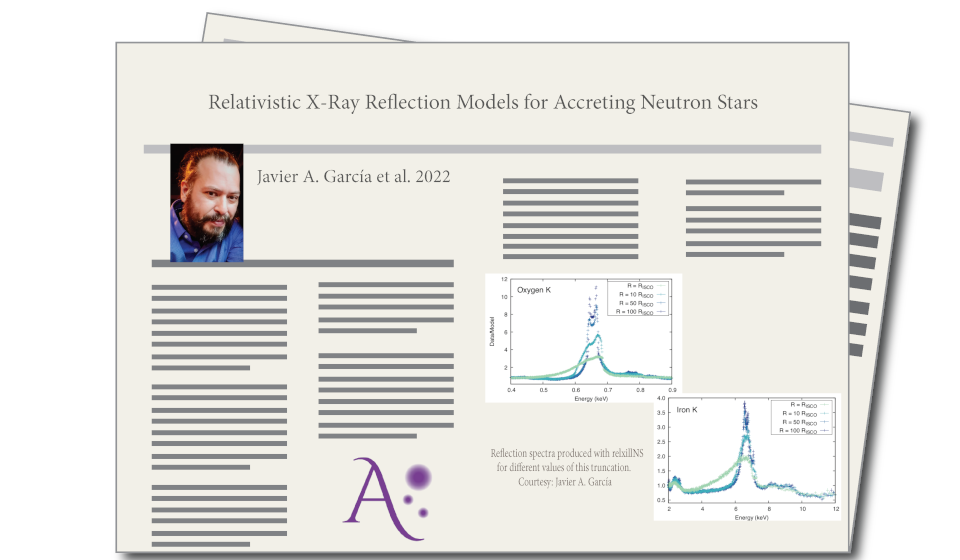
Relativistic X-Ray Reflection Models...

By Javier A. García
Accreting black holes and neutron stars share many similarities when observed in an active mode of mass accretion. These systems often show signatures of X-ray reprocessing in the accretion disk, characterized by fluorescent emission (typically Fe K-shell transitions), absorption edges, and the effects of Compton scattering. Detailed modeling of the reprocessed spectrum provides direct information on the state and composition of the gas and can be used to probe relativistic effects in the space-time distorted by the strong gravitational field. However, unlike black holes, in neutron star systems the accretion disk has the possibility to extend all the way to the surface of the star (or to the boundary layer). This allows the estimation of an upper limit to the radius of the neutron star, by modeling the shape of spectral lines in the X-ray spectrum, which in turn can then be used to constraint models for the equation of state of degenerate dense matter. In this paper, we present new relativistic X-ray reflection models specifically tailored to model the reprocessed radiation from accreting neutron stars, in which the continuum is dominated by a single-temperature blackbody spectrum. We show that the reflected spectrum differs significantly from that in black hole systems, mainly because of the large impact of the continuum shape in determining the ionization structure of the illuminated disk's atmosphere. Simulations performed with Athena's X-IFU responses highlight the exceptional diagnostic potential of these instruments in providing high resolution and high signal-to-noise observations for X-ray reflection spectroscopy studies. The microcalorimeter in Athena will reveal the shape of iron and oxygen K-shell lines with exquisite detail, yielding evermore accurate constraints on the inner radius of the accretion disk around compact objects. Access to the manuscript in ADS.

